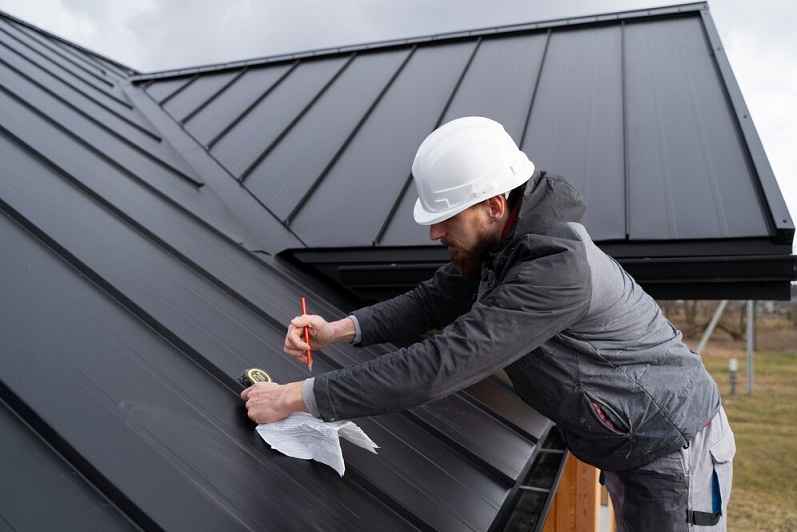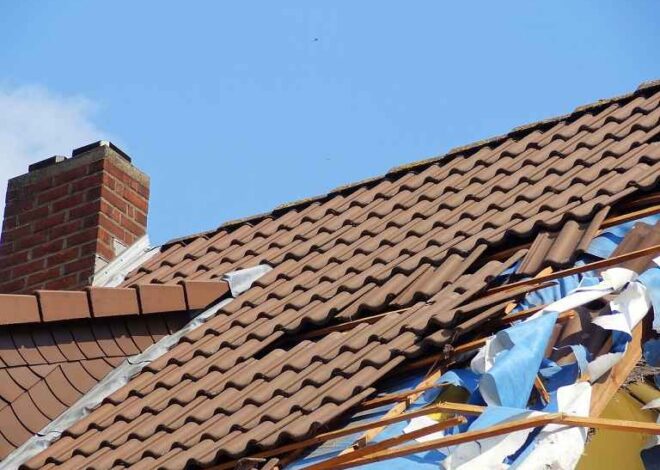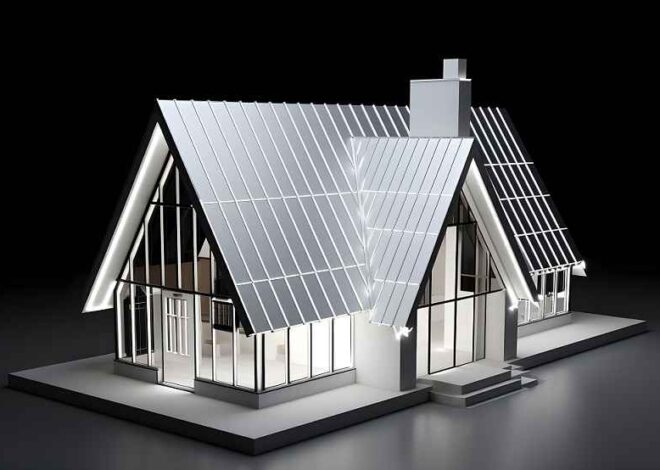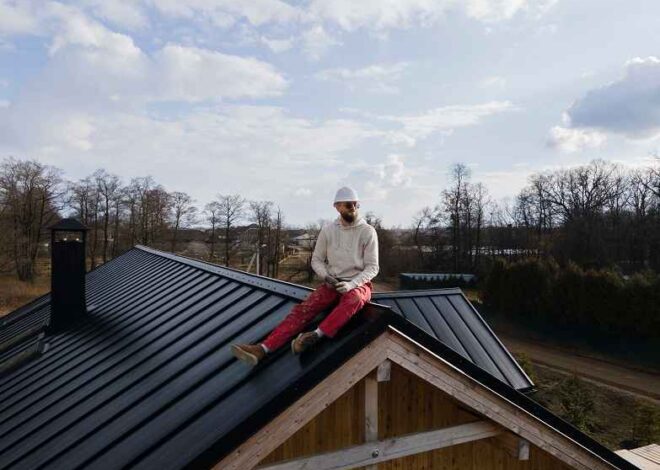
How to Stop a Roof Leak Temporarily
Roof leaks can be a homeowner’s worst nightmare. When water starts dripping through the ceiling, it’s not only a nuisance but can also lead to extensive damage if left unattended. That’s why it’s crucial to address a roof leak as soon as possible, even if it’s just a temporary fix. In this comprehensive guide, we’ll show you how to stop a roof leak temporarily and prevent further harm to your home.
Our focus keyword for this article is “Temporary Roof Leak Fix,” as we’ll be exploring practical, short-term solutions to this common problem. By the end of this post, you’ll have the knowledge and tools to quickly address a roof leak and buy yourself some time before a permanent repair can be made.
Understanding Roof Leaks
Before we dive into the temporary fix, it’s essential to understand the common causes of roof leaks and the signs that indicate a problem.
Common Causes of Roof Leaks
Roof leaks can be caused by a variety of factors, including:
- Weather-related damage: Heavy storms, strong winds, and excessive rain can all take a toll on your roof, leading to cracks, missing shingles, or other openings that allow water to seep in.
- Aging roofing materials: Over time, the roofing materials on your home can deteriorate, making them more susceptible to leaks. This is especially true for older roofs that haven’t been properly maintained.
- Poor installation or maintenance: If your roof was not installed correctly or has not been regularly inspected and maintained, it’s more likely to develop leaks.
Signs of a Roof Leak
Identifying a roof leak early on can help you address the problem before it causes significant damage. Here are some common signs to look out for:
- Water stains on ceilings or walls: These unsightly marks are a clear indication that water is finding its way into your home.
- Damp spots or mold growth: Excess moisture can lead to the formation of mold, which can be a health hazard.
- Dripping water or puddles in the attic: If you can hear or see water accumulating in your attic, it’s a sure sign of a roof leak.
Preparing for a Temporary Fix
Before you attempt to temporarily fix a roof leak, it’s important to take some safety precautions and gather the necessary tools and materials.
Safety Precautions
Accessing your roof can be dangerous, so it’s crucial to prioritize your personal safety. Wear non-slip shoes, gloves, and a safety harness to prevent falls or injuries.
Tools and Materials Needed
To temporarily stop a roof leak, you’ll need the following items:
- Tarpaulin or plastic sheeting: This will be used to cover the affected area and prevent water from entering your home.
- Roofing tape or sealant: These products will help you seal the leak and create a temporary barrier.
- Ladder and safety harness: Ensure you have a sturdy ladder and a safety harness to access the roof safely.
Step-by-Step Guide to Temporary Roof Leak Fix
Now that you’ve gathered the necessary tools and materials, let’s walk through the steps to temporarily stop a roof leak.
Step 1: Locate the Leak
The first step in addressing a roof leak is to identify the source. This can be challenging, as the water may be entering the home at a different location than where it’s visible. Here are some tips to help you pinpoint the leak:
- Visually inspect the roof: Look for obvious signs of damage, such as missing or cracked shingles, or areas where the roofing material appears to be deteriorating.
- Use a water test: Gently spray water on the suspected leak area and observe where the water is entering the home. This can help you narrow down the source of the problem.
Step 2: Apply a Temporary Patch
Once you’ve located the leak, it’s time to apply a temporary patch to stop the water from entering your home. Here’s how:
- Apply roofing tape or sealant: Carefully clean the affected area and apply a generous amount of roofing tape or sealant to cover the leak. Make sure to overlap the edges to create a tight seal.
- Secure a tarpaulin: If the leak is larger or more severe, consider covering the entire area with a tarpaulin or plastic sheeting. Secure the edges with roofing tape or nails to ensure a tight seal.
Step 3: Protect the Interior
While you’re working on the roof, it’s important to protect the interior of your home from any remaining water intrusion. Here’s what you can do:
- Place buckets or containers: Position buckets or other containers underneath the leak to catch any dripping water.
- Use towels or cloths: Lay towels or cloths around the affected area to absorb any moisture and prevent further damage to your home.
Temporary Fixes for Different Types of Roofs
The temporary fix you choose will depend on the type of roof you have. Here’s a quick overview of how to address leaks on different roofing materials:
Asphalt Shingle Roofs
For asphalt shingle roofs, you can use roofing tape or sealant to cover small cracks or holes. If the damage is more extensive, consider applying a tarpaulin or plastic sheeting over the affected area.
Metal Roofs
Temporary sealing methods for metal roofs may include using a specialized metal roof sealant or applying a self-adhesive patch over the leak.
Flat Roofs
Addressing leaks on a flat roof often involves using a liquid sealant or applying a tarpaulin over the affected area and securing it with adhesive or fasteners.
When to Call a Professional
While temporary fixes can be an effective stopgap measure, they should not be considered a long-term solution. There are several signs that indicate you need to call in a professional roofing contractor:
- Persistent leaks: If the temporary fix doesn’t seem to be holding or the leak continues to reappear, it’s time to seek professional help.
- Structural damage: If the leak has caused significant damage to the roof’s structure or the interior of your home, a professional assessment is essential.
- Extensive water damage: Prolonged exposure to water can lead to mold growth, rot, and other serious issues that require the expertise of a professional.
Preventing Future Roof Leaks
While temporary fixes can help you address an immediate problem, it’s important to take steps to prevent future roof leaks. Here are some tips:
Regular Roof Maintenance
Regularly inspecting and maintaining your roof is key to avoiding leaks. This includes:
- Cleaning gutters and downspouts to ensure proper drainage
- Addressing minor issues, such as missing or cracked shingles, before they become larger problems
- Scheduling professional roof inspections and cleanings
Weatherproofing Tips
Enhancing the weatherproofing of your roof can also help prevent future leaks. Consider:
- Installing gutter guards to keep debris from clogging your gutters
- Using weather-resistant roofing materials for any repairs or replacements
Conclusion
Roof leaks can be a frustrating and potentially costly problem, but with the right temporary fix, you can quickly address the issue and prevent further damage to your home. Remember to prioritize safety, gather the necessary tools and materials, and follow the step-by-step guide to temporarily stop the leak. And when the time comes, don’t hesitate to call in a professional to ensure a lasting solution.
By implementing these temporary fixes and taking proactive steps to maintain your roof, you can enjoy a dry, well-protected home for years to come. If you have any additional questions or need further assistance, be sure to check out the related articles and FAQs below.


